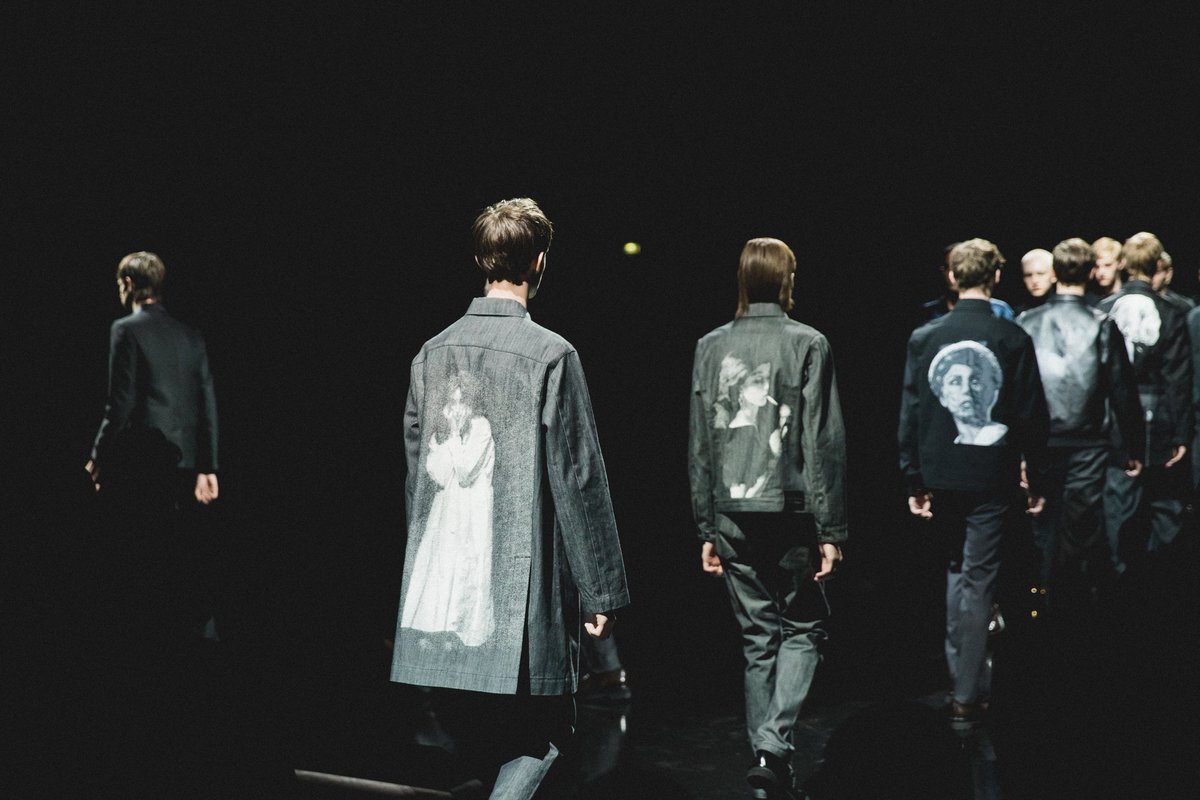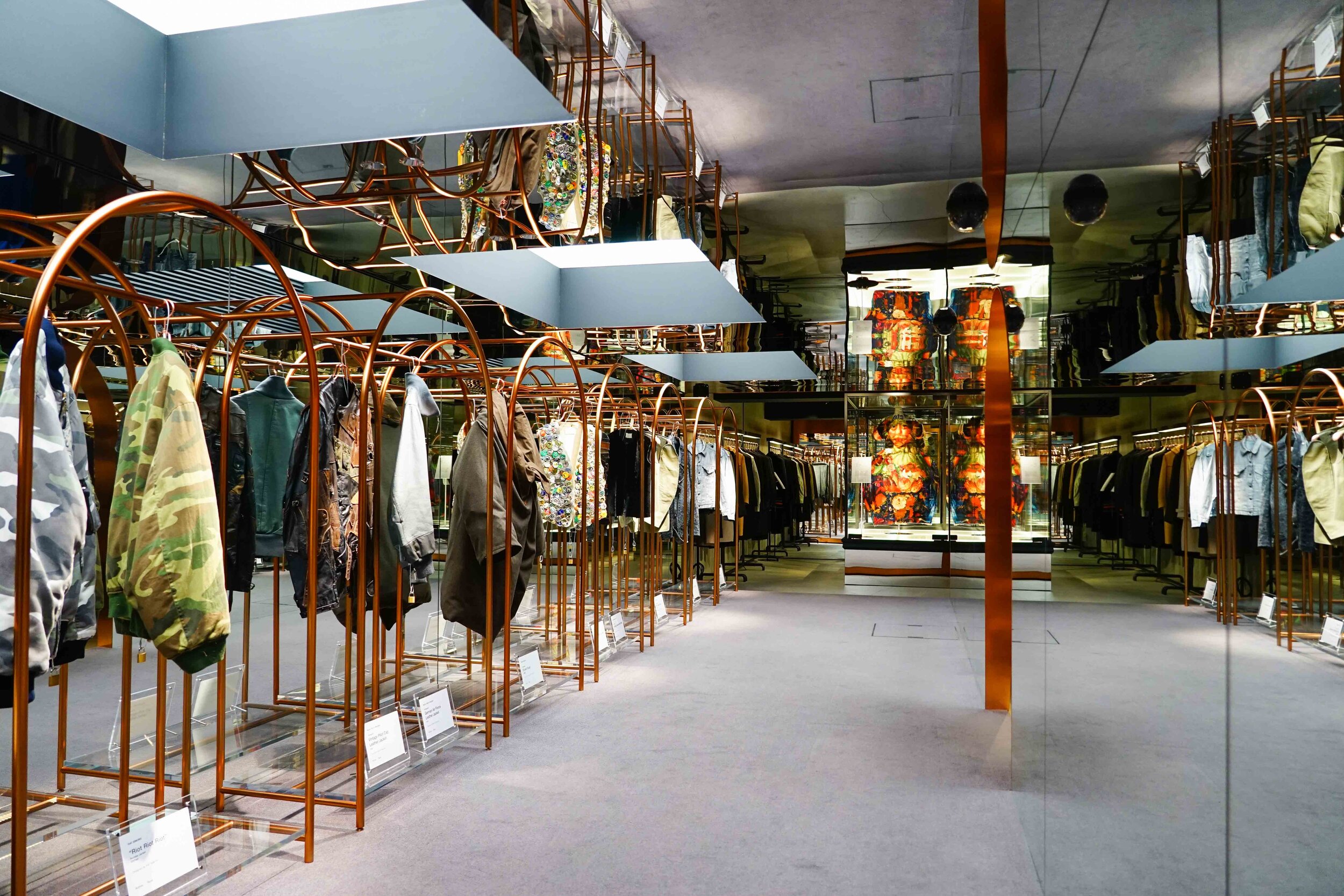BLURRING THE LINES OF FASHION AND ART: EAST-MEETS-WEST

AN ARTISTIC AFFAIR: JAPAN AND THE WESTERN WORLD
Emerging from the rise of capitalism and society’s liberal ideologies, fashion has placed itself as an everyday occurrence and it just so happens that we all need to get dressed, don’t we? The landscape in which it has created has altered through time, shaped by individuality and influence which has also stemmed from a collision of crossing cultures. This aura of a merging of nations has become more accessible by the modern world, where technology and Instagram’s open door into fashion is as important and profound as ever.
Paris, Milan, London and New York City, the so-called ‘fashion capitals’ of the world - where runways take place, designers grow, and brands are built. Where these capitals have staked their game in the fashion world, it is ultimately known as a worldwide affair and always will be. Although not listed in the previously mentioned honours list, the eastern mecca of fashion lays in the hands of Tokyo and its parent country, Japan. The foundation and influence that Japanese culture has and is having on the western world can be highlighted through varying facets, but fashion is concluded as a major contributor and has most recently been exemplified by the appointment of NIGO as creative director of LVMH-owned label Kenzo. Recent decades have washed the western world with Japan’s distinct design cues, Kimono-inspired cuts and cemented itself to inspire the modern design compass which is the beating heart of Japanese fashion.
Where Japan has ingrained itself into the workings of brands from the western world, it is also no stranger to any fashion enthusiast that when looked at the bigger picture that the west is slowly trickling through its various mediums into the minds of Japan’s streetwear, contemporary and high-fashion vanguards. Comme des Garçons, Wacko Maria, Human Made and toymakers, Medicom, amongst many others have flipped the traditions of eastern design on its head to incorporate a captivated worldwide audience.
One of Japan’s greatest fashion exports, Rei Kawakubo of Comme des Garçons is a true example of such infiltration. Having dipped her toes into artistic territories throughout her career, it was only going to be a matter of time before Comme des Garçons became embroiled in it. Filip Pagowski, a graphic artist who worked his unusual illustrations into Rei Kawakubo’s work in the late 90s and early 2000s is a significant portrayal of her attitude towards design. Comme des Garçons needed a simple, easily identifiable visual style that would make their PLAY line stand in its own merit, to which Pagowski offered his services by designing the heart-shaped logo we all recognise today. Identifiable expressive eyes on a heart-shaped background has become the substratum of countless garments and collaborations the PLAY line has been involved with. Converse’s Chuck Taylor 70 embellished in heart-shaped beauty navigated this crossover of artistic disciplines and allowed the Comme des Garçons empire to take their toes out of the high-fashion sphere and place them into the mainstream for a very long minute.
Staying inside Rei Kawakubo’s domain, the boundless nature of 2020’s Comme des Garçons SHIRT collection enlisted New York’s very own graffiti-guru, Futura to take the design helm. Incorporated through his unique colourful aesthetic and signature Pointman character, the spray-paint like design presented an abstract approach to the collection, emphasizing vibrancy and pioneering street art cues. Comme des Garçons SHIRT is usually defined by its elegant approach to sartorial menswear shapes and silhouettes, but this added extra layer – connecting the streets of New York to high-fashion’s perpetual runway demonstrates the way fashion is being shaped, particularly in Japan and America.
The scale of this east-meets-west fashion and art concoction doesn’t stop at Comme des Garçons, it starts there. Western art culture can’t be mentioned without the inclusion of Jean-Michel Basquiat. Regarded as one of the most influential artists of the 20th century, Basquiat rose to success in the late 1980s, influencing rap, punk, and hip-hop culture before leading into influence fashion. Focusing on sectors of wealth, poverty, class and racism, his abstract portrayal and role in the Neo-expressionist movement of the 1980s brought his work to great value, only to increase even more so after his death in 1988. With both art and fashion informing one another, the appreciation of the former has come up trumps in the workings of Wacko Maria. Injecting an attitude of artistic discipline into their decorative collection, Jean-Michel Basquiat’s work has become the driving nucleus of this. Their Spring/Summer 2021 collection in particular captures the unique and overtly eye-catching nature of his work, making the Guilty Parties brand another exposure medium for Basquiat, marrying one culture to another and enhancing his own personal limelight in the eastern hemisphere.
The assembly of artistry navigating into the Japanese space is frequent and has been for some time. Since his first toy collaboration with Japanese clothing brand Bounty Hunter in 1999, American artist and designer, KAWS is a mainstay, partnering with countless brands, creatives and designers from the eastern side of globe ever since. Recognised for his projects incorporated from toys, paintings and prints, KAWS’ distinctive styling and permeation into pop art and culture has become a hit with the eastern world. Having been compared to the Japanese artist, Takahashi Murakami, his continuation to blur lines of fine and commercial art have seeped into collaborations with the likes of Human Made’s Nigo, A Bathing Ape, Comme des Garçons, Medicom Toy and most recently, the avant-garde lineage of Chitose Abe’s Sacai.
When Nigo’s work is concerned, the brands he has forged and partnered with have significantly touched on nuances of art. Supporter of KAWS’ early work in 1996, the two have become lifelong collaborators with Nigo commissioning a handful of the artist’s most successful work – KAWS’ ‘The KAWS Album’ which set a new auction record for the American artist. Alongside KAWS, Nigo’s work has also included Futura and American graffiti artist, Stash. Pushing ahead of the curve before other Japanese based brands, bringing both enriched cultures into one entity.
“We Make Noise, Not Clothes”
As Nigo brought an identity of Japanese cartoon aesthetics to the floor, other names took an alternate route to drive down the road of subcultural guidance. “We Make Noise, Not Clothes” is a translation of Jun Takahashi’s brainchild, Undercover: his distinct, disruptive approach to Japanese streetwear drenched in a covering of punk rock. Seemingly something not traditionally associated with traditional Japanese styling but a way that has transfixed an audience far wide from just the shores of Japan. After first catching the gaze of fellow Japanese counterpart, Rei Kawakubo in 1994, Jun Takahashi has gone onto form work partnerships with BAPE, Visvim, Neighborhood, as well as being one of the first to collaborate with street artists, Futura and KAWS. Most recently, Jun Takahashi’s Undercover crossed oceans once again to form alliance with American artist, Cindy Sherman. Rendering a series of black tailored garments, the collection centred around her renowned Untitled Film Series, in which she worked on between 1977 and 1890, depicting a series of sinister portraits from fantasy Hollywood films.
Deviating from the domain of fashion into the realm of Japan’s premium toymakers, Medicom have paved a unique route into luxury household offerings for the contemporary world. Built on the aim of creating collectible art, rather than conventional toys, Medicom’s popular Bearbrick series fuses world renowned art, culture and music into bear-shaped figurines. Medicom are trailblazers in this east-meets-west affair with a catalogue of artists scripted on their sought-after collectibles; Jean-Michel Basquiat, KAWS, Andy Warhol, Van Gogh, Jackson Pollock, Charles M. Schultz and Keith Haring to name a few, set the collection and brand into the gaze of worldwide disciplines of art, fashion, music and culture.
As the fashion landscape between crossing societies and cultures becomes more transparent, and the likelihood of the rolling cascade of collaboration stays at the mainframe of fashion, the mentality of east-meets-west design codes look more likely continue. Where fashion of the east meets art of the west, the Japanese design foundation continues to flush the waters of their western counterparts, informing through a myriad of more than just fashion and art.
About the Author
Sam Gunn is a writer based in Manchester, UK. His work focuses on permeating his passion for fashion, art, music and culture to a worldwide audience through online platforms and publications.













